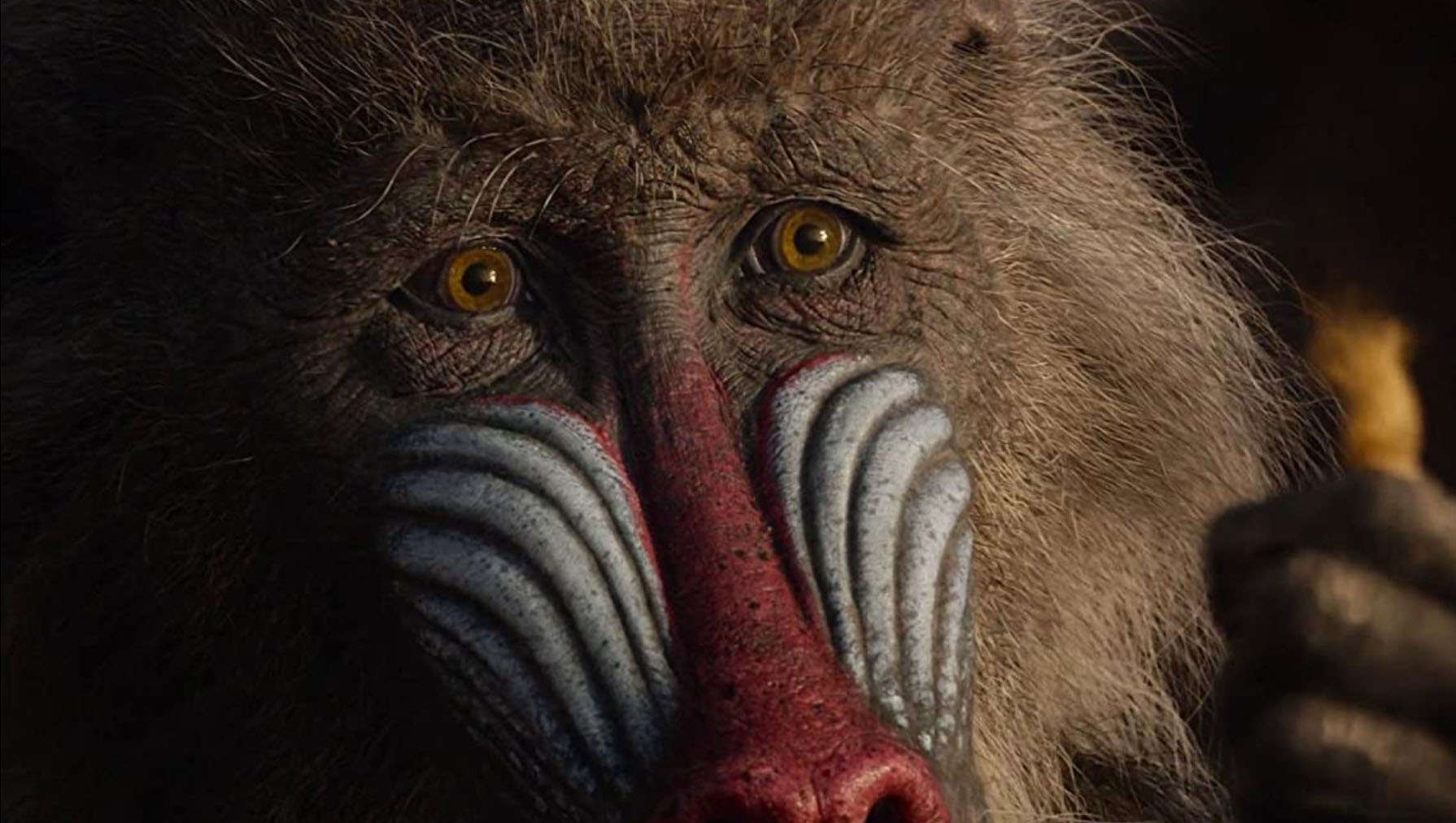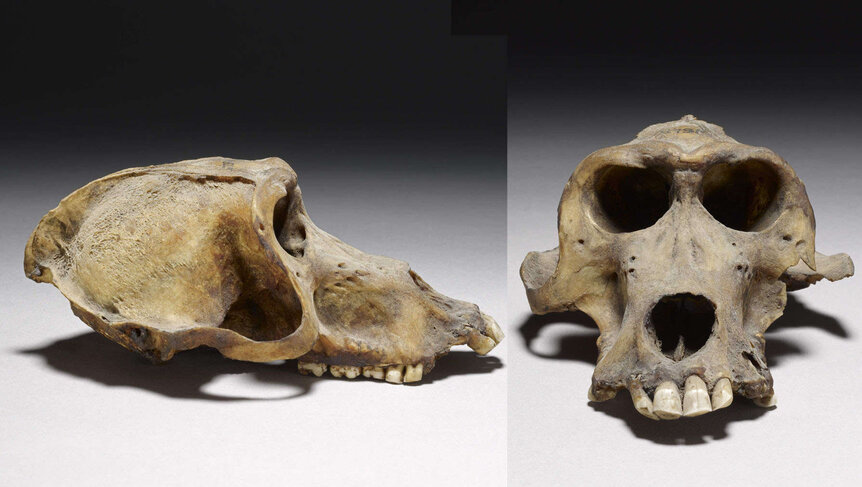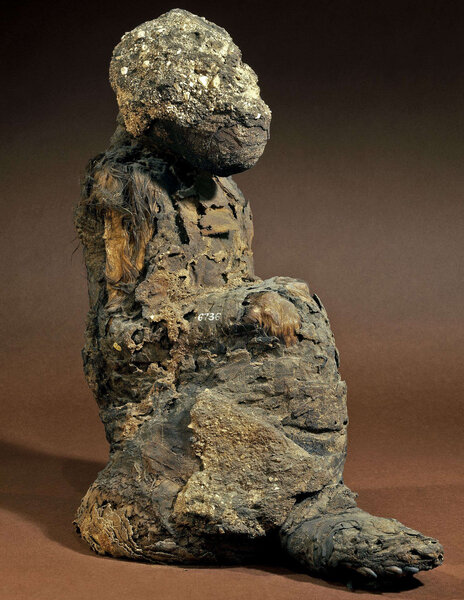Create a free profile to get unlimited access to exclusive videos, sweepstakes, and more!
Mummified baboons whisper of a mysterious long-lost civilization from beyond the grave

Eden. Atlantis. Punt. These long-lost places have existed mostly in myth and legend rather than on a map, but an unlikely creature is now revealing the ghost of one of them.
The exact location of Punt has been a mystery for over 150 years. Mummified baboons from ancient Egypt — which are not endemic to Egypt — are telling scientists more about where this exotic land where they came from. Tracing the baboons’ geographic origins by analyzing chemicals in their mummies is showing the path to Punt, which used to trade luxuries like spices and resins (and baboons) with Egypt. Ancient Egyptian reverence for these animals is already known from funerary art showing them as pets in life and even deifying them in death.
What led the Egyptians to worship an animal that didn't even originate near the life-giving waters of the Nile is still a mystery, though the sun god Ra may have had something to do with it.
“There is no evidence but some speculation,” anthropologist Nathaniel Dominy, who led a study recently published in eLife, told SYFY WIRE. "Some Egyptologists have argued that Baboons vocalize toward the rising Sun at dawn, which would have resonated with Egyptian religious practices. It is possible that ancient Egyptians witnessed this natural behavior and distinguishe them as worthy of veneration. When you look closely at the status of baboons in Egypt, they are always facing east towards the rising Sun wtih arms raised, which is called the posture of adoration."
Egyptians kept two species of baboon as sacred animals. Papio hamadryas was the most revered, often associated with the scribe god Thoth, and Papio Anubis, which was also held in high esteem. Worship of baboons went beyond Thoth. Hedjwer was the first baboon god and one of the oldest known Egyptian gods. Babi was thought to be the son of Osiris who lurked in the underworld, threatening to eat guilty souls, and Hapy, whose likeness was used on canopic jars, protected the lungs of someone who had been mummimfied. Baboons are the only animal in the Egyptian pantheon that were brought from somewhere else.
Unearthing Punt meant tracing the origins of the P. hamadryas and P. anubis baboons found mummified in Egyptian tombs. Ancient writings and art would give Dominy’s team a clue before they literally took a microscope to their findings.
Punt is already known to have been southeast of Egypt, somewhere around the Red Sea, and that even though it could be reached by land, seafaring Egyptian traders often sailed there. Among the pyramids of Sahure is the earliest depiction to an expedition to Punt. Dated to 2480 B.C., it shows monkeys, particularly baboons, as one of the imports headed back with the traders. A Middle Kingdom story known as The Tale of the Shipwrecked Sailor also places Punt in the Red Sea. It tells of an Egyptian sailor washed up on a magical island, where he meets the serpent “Lord of Punt,” and among the gifts given by the serpent lord are baboons.
Tomb reliefs in the necropolis of Deir el-Bahri also support that location, putting Punt either in the Horn of Africa or what was broadly referred to as “God’s Land”, which stretched across the coast of the Red Sea. Surviving texts also mention baboons in Wetenet, which was more of a mythological realm associated with solar worship, but still said to be around the same area where Punt was rumored to exist.
It was the element strontium that had the potential to unbury a land that has been long forgotten. This metal is present in what a creature eats and drinks, which is how it makes its way into teeth, hair and bone. Strontium found in teeth, whose development ends relatively early, can give away where a specimen originated and what it ate as a juvenile, while traces of it in bone or hair tells of what it ate as an adult and where it died. The food something ate is is indicative of the bedrock beneath the area, which is where strontium comes in. Isotopes of strontium in baboon mummies were already preserved by the dryness of Egyptian tombs. Hair, bone and tooth enamel samples showed that many of the specimens were fed food exclusively from Egypt, which could be evidence of breeding programs, but this was not a dead end. Other mummies unraveled something else.
"Mummies of people who lived in the Nile Valley of Egypt have teeth with a uniformly distinctive ratio of strontium isotopes, a sort of 'fingerprint' that differs from the teeth of a mummified baboon. This is evidence thathe animal's ealry life occurred somewhere else, and we matched the ratio to an area in the southern Red Sea region, suggesting the animal was sourced there."
Sstrontium isotopes in baboon bone samples proved most of a animal's life had been spent in Egypt, but isotopes in its adult tooth enamel showed what it ate during childhood. Baboons that had been born far from the Nile started to reveal more about the location of Punt. Analysis of strontium and oxygen isotopes took Dominy’s team back in time to a region that spreads across most of what is now Djibouti, Eritrea and Ethiopia, along with parts of Somalia and Yemen.
Though the location Punt has been further demystified, there are still ways of further determining where this glittering kingdom once stood.
"Additional bone and tooth samples would improve the accuracy of our models, and ancient DNA is becoming increasingly viable as an alternative approach to matching mummified animals to living populations in Africa or Arabia," Dominy said. "Punt was also a market for luxury goods, including baboons. So it may be difficult to pinpoint where exactly the market was, but I think we can at least draw a boundary around Punt itself."
There is also a chance that baboons were not only exported from Punt. Some may have been from parts of Africa where they no longer live, such as Nubia, which was basically Egypt’s frenemy. They could be mortal enemies one day and trading monkeys the next.
No ancient remnants of Punt have ever been found, but Dominy believes something may eventually surface.
"Archaeology in the region is heavily focused on the Axumite kingdoms and the ancient port of Adulis," he said. "Punt predates these important sites at time horizons that are essentially unstudied. I think a rich archaeological record is waiting for discovery."




























